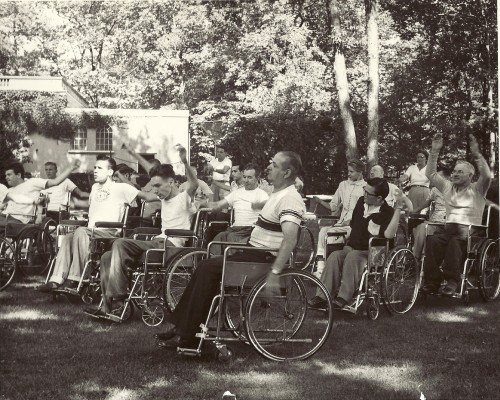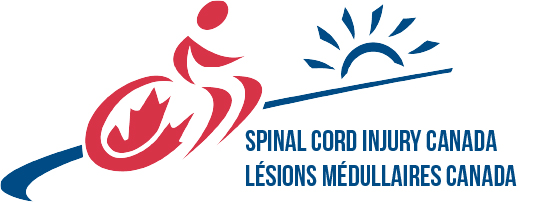Lyndhurst Lodge as a Patient Sees It

Spring 1950 - The Caliper
If you have it sometime entered a strange house and immediately felt a warm, cordial atmosphere, a sensation of being at home, then you will appreciate how a patient feels as he enters Lyndhurst Lodge for the first time. No impersonal, hustling, bustling efficiency of the average institution is here but a reassuring, friendly interest that puts him immediately at ease.
The first interview with Dr. Jousse, the medical superintendent of Lyndhurst, adds to his assurance that he is going to enjoy his stay at the Lodge. Before the interview is finished he knows that here is a man he can like and respect; a man who gets to the heart of the problem at hand without beating about the bush; a man who is not to be fooled, yet who will not assert his authority without extreme provocation.
The longer the patient stays at Lyndhurst the higher becomes his regard for the Doctor’s knowledge, thoughtfulness, understanding and consideration of the physical and mental welfare of his patients. One reason for the smoothness of life at Lyndhurst is Dr. Jousse’s ability to remain calm in the face of the momentary crises that pop up in every day hospital life. Rather than be panicked into ranting and raving and applying drastic restrictions or ultimatums, the Doctor says “Why?” or “Any damage done?” then, if necessary, takes steps. Under this serene approach, upheavals have a way of smoothing themselves out and the alert patient often learns a valuable lesson in restraint from this example.
Life at Lyndhurst is not all beer and skittles. A required number of hours each day is devoted to the production of sweat and muscle. The exercise periods are brisk and hard. Slackers – there are very few – are reminded that by easing off they harm only themselves and retard their own recovery. After the first week or two, during which time muscles whose existence had hitherto been unsuspected are discovered through aches and stiffness, the exercises become less of a chore. There are mat classes, chair classes, leg classes and periods of walking, physiotherapy and volleyball, and these exercises are skillfully blended to develop the highest degree of strength, range of movement and balance.
The physical training and physiotherapy staff under the leader ship of the incomparable George White is competent, cooperative and unexcelled anywhere as a therapy unit. George White has the enviable faculty of being able to make his patients do more than they think they can. Demanding, demonstrating, flattering and humorously prodding in turn, he seems to know just when each attitude is necessary for the best results. That the results attained by these instructors and therapists are remarkable is proven by the progress shown by patients in a few short months of treatment and the ease with which they look after themselves before leaving Lyndhurst.
Capacity of the lodge is 36 patients, but the small number allows more specialized treatment. In addition to the routine classes, patients suffering affliction of varied muscle groups are given extra attention. Being a quadriplegic, I was in this group. Burt Hensen, George White’s able assistant, kept the quads busy with various muscle-building gadgets and appliances while he conducted the leg class or Delormes. While most of the exercises are carried out along orthodox lines, the quadriplegic is encouraged to devise his own methods of caring for himself according to his own particular disability, the ultimate in being that, no matter the method, the patient will be completely independent.
My own case is a fair example of this point. In 1934, polio left me severely paralyzed and recovery was extremely slow. Although I could do a number of things for myself when I entered Lyndhurst in 1948, dressing and undressing without some aid, manoeuvering in and out of bed, automobiles, etc., were beyond me. I spent a year at Lyndhurst at the expense of the Canadian Paraplegic Association, enjoyed every minute of it and never felt better in my life. More important, before I left I was able, with the aid of one or two devices, to look after myself quite well. I have neither the ability nor the speed of the average paraplegic but I get there.
Besides working hard, the patient is urged to play hard in the off hours and to live as normal a life as possible. In fact, Dr. Jousse prefers his charges to seek their recreation and entertainment outside the Lodge. Patients who are self-conscious about their disability soon learn to conquer their fear and to gad about the city with a minimum of restriction. The Canadian Red Cross is exceedingly generous in supplying transportation to and from the Lodge for outings planned by the manager of the Lodge or the Outside Entertainment Convener of the Patients’ Council. Sporting events, plays, theatres, and musical performances are all within reach of the patient and the cooperation of the managers and producers of this entertainment is more than gratifying.
Another important cog in the life at Lyndhurst is the Patients’ Council, which has the full sanction of Dr. Jousse and is recognized by the employees of Lyndhurst and various organizations outside the Lodge. A meeting is held each Monday evening. Dues are nominal and although not compulsory, the attendance of every patient is encouraged. An executive of seven, elected every three months, presides, and the meetings are conducted with parliamentary procedure. Suggestions, complaints, plans for indoor and outdoor social events and everything pertinent to the patient’s activities are discussed. Personal differences are ironed out amicably thus furthering the harmony and good-fellowship among patients. The Minutes Book offers ample proof that quite a number of the improvements and additions to the Lodge as it grew in scope arose directly from the suggestions put forth by the Patient’s Council.
But the Lodge and the Paraplegic Association do not limit their efforts to physical development alone. Rehabilitation is just as important. Aptitude tests administered by a trained psychologist and the personal attention of an experienced rehabilitation officer are at the disposal of every individual under treatment. These services are important to the veteran and compensation cases but the patient who has no private income they are invaluable. Working with service clubs and similar organizations in the paraplegic’s community, the Canadian Paraplegic Association strives to provide the paraplegic with living accommodations and a job on leaving the Lodge; sometimes even setting him up in business for himself.
As yet, my rehabilitation is not complete, but with the CPA and a Hamilton organization behind me, I am waiting only for a store that, meeting the requirements of my disability, will allow me to be on my own.
Lyndhurst is but one part of the vigourous and far-reaching undertakings of the CPA, and a year of treatment there opens one’s eyes to the amount of credit due to such men as John Counsell, Ken Langford and the Board of Directors of the Association who pushed this work forward. One comes to realize that each paraplegic rehabilitated is not only a victory for the CPA, but a decided asset to the community and the country for no longer does he require hospitalization in an institution which of necessity derives a great part of it upkeep indirectly from the taxpayer’s pocket. More dramatic than these considerations is the paraplegic’s satisfaction in having regained his health, adapted himself to his new way of life and found that life offering new horizons of physical and financial independence – all brought within his reach by treatment at Lyndhurst Lodge.
